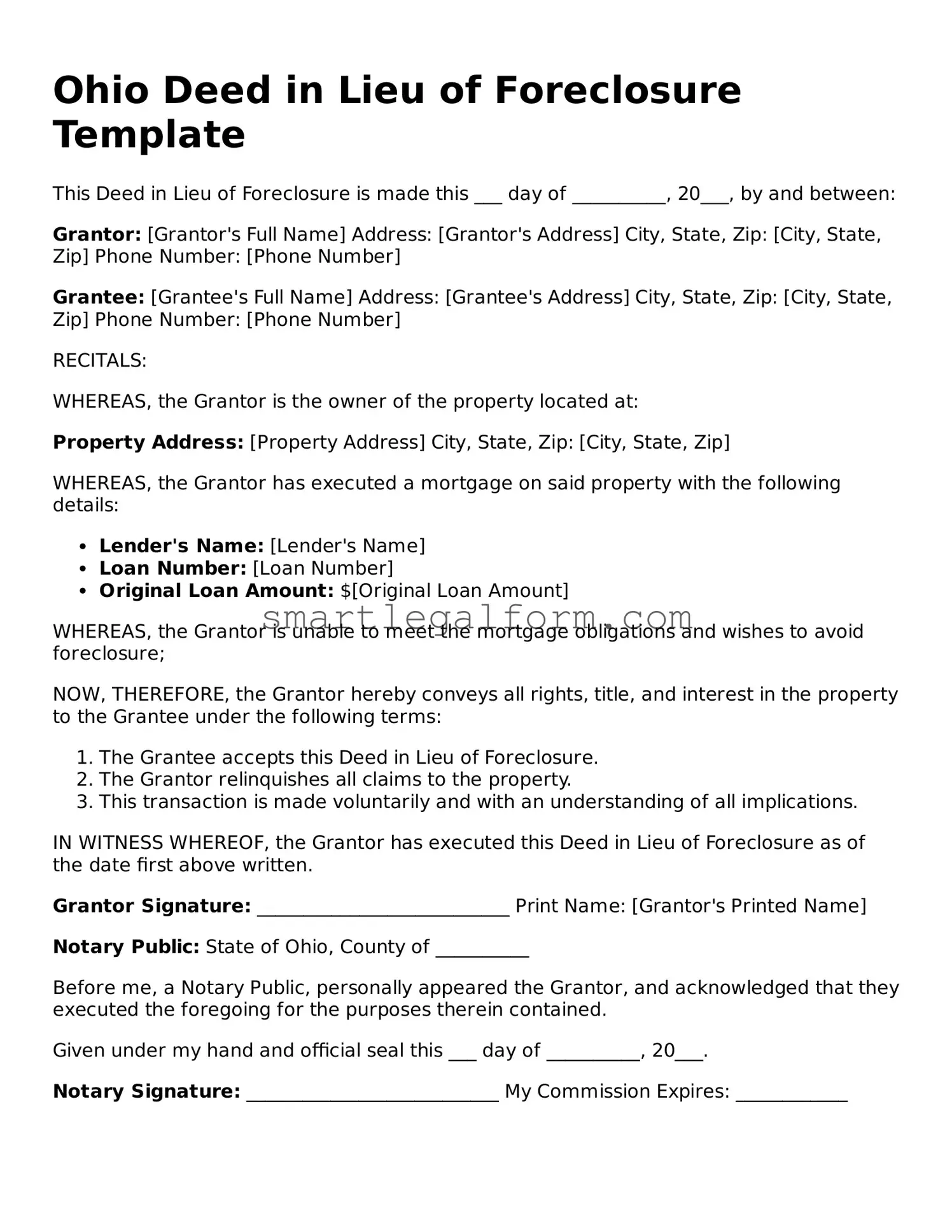Ohio Deed in Lieu of Foreclosure Template
This Deed in Lieu of Foreclosure is made this ___ day of __________, 20___, by and between:
Grantor: [Grantor's Full Name]
Address: [Grantor's Address]
City, State, Zip: [City, State, Zip]
Phone Number: [Phone Number]
Grantee: [Grantee's Full Name]
Address: [Grantee's Address]
City, State, Zip: [City, State, Zip]
Phone Number: [Phone Number]
RECITALS:
WHEREAS, the Grantor is the owner of the property located at:
Property Address: [Property Address]
City, State, Zip: [City, State, Zip]
WHEREAS, the Grantor has executed a mortgage on said property with the following details:
- Lender's Name: [Lender's Name]
- Loan Number: [Loan Number]
- Original Loan Amount: $[Original Loan Amount]
WHEREAS, the Grantor is unable to meet the mortgage obligations and wishes to avoid foreclosure;
NOW, THEREFORE, the Grantor hereby conveys all rights, title, and interest in the property to the Grantee under the following terms:
- The Grantee accepts this Deed in Lieu of Foreclosure.
- The Grantor relinquishes all claims to the property.
- This transaction is made voluntarily and with an understanding of all implications.
IN WITNESS WHEREOF, the Grantor has executed this Deed in Lieu of Foreclosure as of the date first above written.
Grantor Signature: ___________________________
Print Name: [Grantor's Printed Name]
Notary Public:
State of Ohio, County of __________
Before me, a Notary Public, personally appeared the Grantor, and acknowledged that they executed the foregoing for the purposes therein contained.
Given under my hand and official seal this ___ day of __________, 20___.
Notary Signature: ___________________________
My Commission Expires: ____________
